► Petrol and diesel 208 hatch driven
► Uses CMP platform with Corsa
► Striking ‘mini available to order now
Here’s a new Peugeot supermini with the same name as the old one – the 208 should by rights be called the 209, but it’s not, and that’s weird.
Or is it? Because the French maker has struggled to replace the 205, with subsequent generations selling in vast numbers but lacking in charm. Only the previous generation 208 felt like it was on the way to recapturing the magic of the original.
So it’s right that this car carries the same badge. This is not just another forgettable small Peugeot: this is everything good from the last 208, plus some dramatic new stuff too, including an all-electric version and lots of gadgets.
Check out our Peugeot 208 Electric Review
Okay, put me in the driving seat
Crank the grab handle to lower the seat, and you’ll need to drop the rake-and-reach-adjustable steering wheel into your lap. A Peugeot USP is a steering wheel the size of a cotton reel, which requires positioning low else you may obscure the instrument panel. And that would be a shame because on mid-spec Allure trim and above, customers get novel 3D dials.
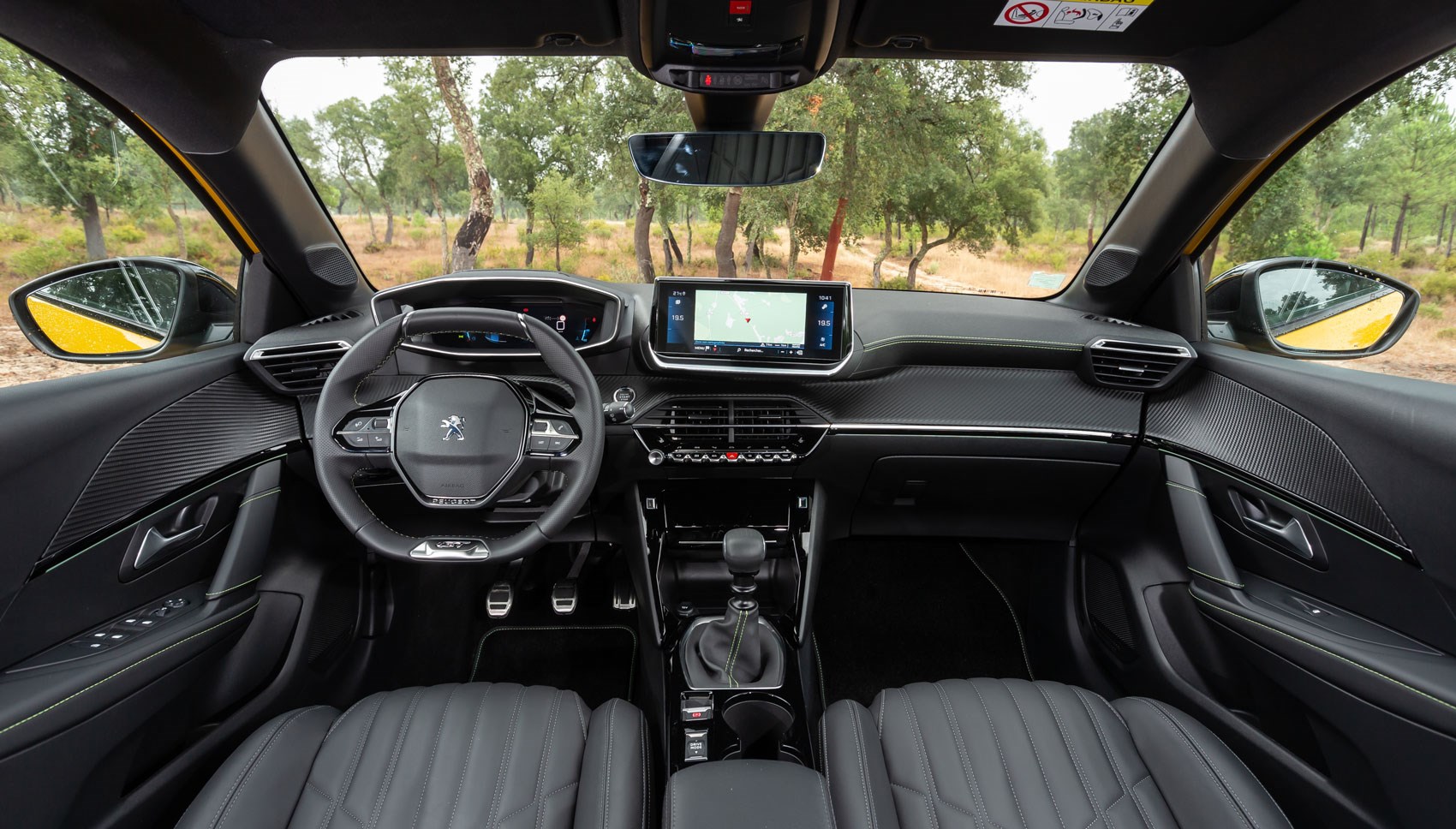
This layers up instrument panel data like the tiers of a wedding cake, with critical info projected on slanted Perspex in the foreground, and secondary stuff listed on a screen set further back. Peugeot clearly deems a digital speedometer, an indistinct tachometer strip and your locale’s speed limit critical info, and… not much else, it appears. Flicking through other displays can bring driver assist systems such as cruise control or the navigation directions centre stage.
Yes, the colourful display is inviting to look at, but I couldn’t shake the feeling that the benefits are strictly cosmetic, before beginning to wonder if I should book in for an eye test. Weirdly, I was more impressed by the concave section stretching across the dashboard – it’s like peering into a roof gutter made of carbonfibre: unexpected but delightful.
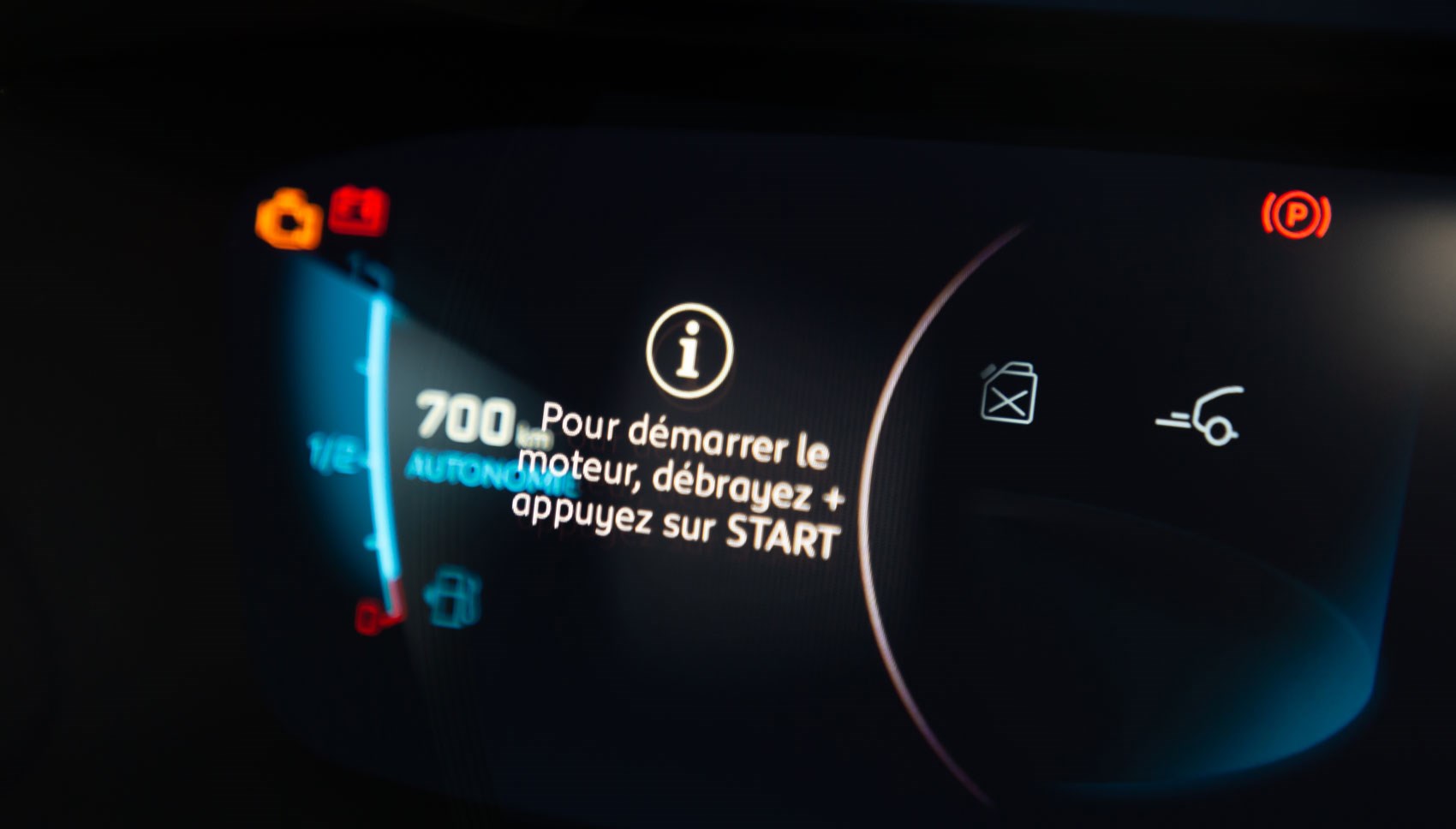
Quality all round feels to a high standard, and it’s not too cramped: the new 208 is longer but lower than the outgoing car, which enhances its proportions visually, and the boot has grown to 311 litres – that’s more than the Fiesta but less than the new Clio.
Enough throat-clearing: how does it drive?
Swing the steering wheel at low speeds and you’ll find it’s lighter than the products of a Great British Bake Off meringue week, conceived for easy manoeuvring. There’s more resistance at motorway speeds which makes the 208 feel reassuringly stable, but occasionally the computer-controlled assistance can feel inconsistently weighted and a bit loose off the dead-ahead.
Turning is accompanied by plentiful body roll – this mid-range three-cylinder supermini is rather softly sprung. It’s not ungainly and feels more pronounced from the passenger seat, but it’s ever-present, and the firm, progressive brakes can cause a bit of nose-pitching too.
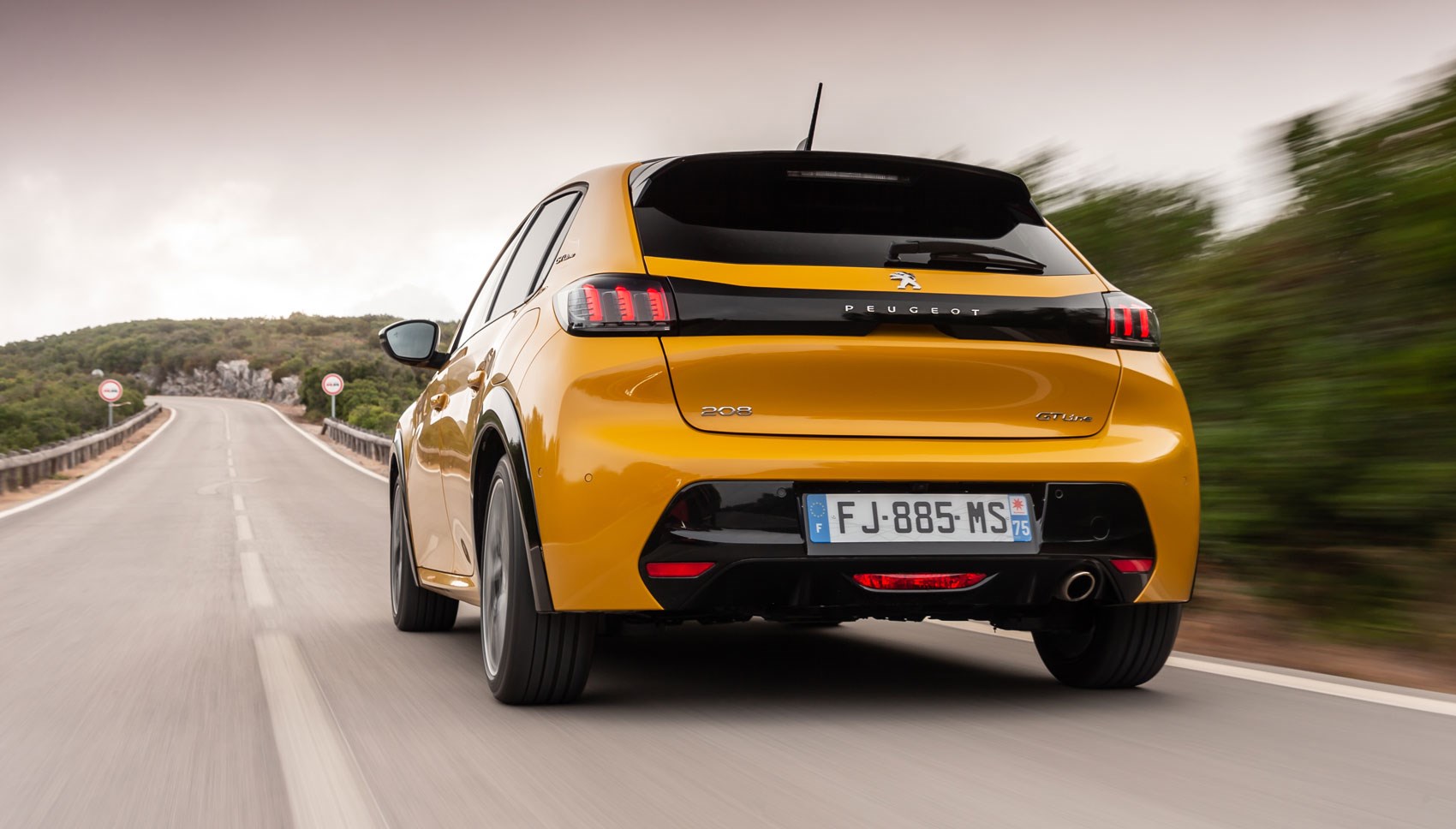
GT Line cars with their lowered suspension and larger wheels offer a considerably harsher ride, so it’ll be interesting to see how they fare in the UK. In fairness the sportiest 208 handles small bumps quite well, but does get less comfortable over larger defects.
Tyre roar is well suppressed though and there wasn’t too much wind noise at speed: the 208 is shaping up to have decent refinement levels, especially when it comes to its smooth, hushed engines.
The engine line-up
The engine is Peugeot’s familiar 1.2-litre turbocharged petrol, available in three states of tune comprising 74, 99 and 127bhp. We’ve driven all three and the middle is the best all-rounder, available with both manual and automatic gearboxes (the lower powered version is three pedal only, while the stoutest 208 is only sold with an auto) so will suit the majority of drivers.
Watch CAR’s video: Peugeot 208 petrol vs electric vs diesel
Drop the featherlight clutch and the 208 gets off the line eagerly with the free-revving engine thrumming away in the background, although it runs out of puff in the mid-range. The benchmark sprint from standstill to 62mph takes 9.9sec.
Power is transmitted to the front wheels by an eight-speed automatic, or the six-speed manual tested here. The throw action isn’t too long but can be a little indistinct (you might mistake third for first), and it’s not helped by an unhelpfully supersized gearknob that’s like handling an upside-down golf driver (a club, not a person).
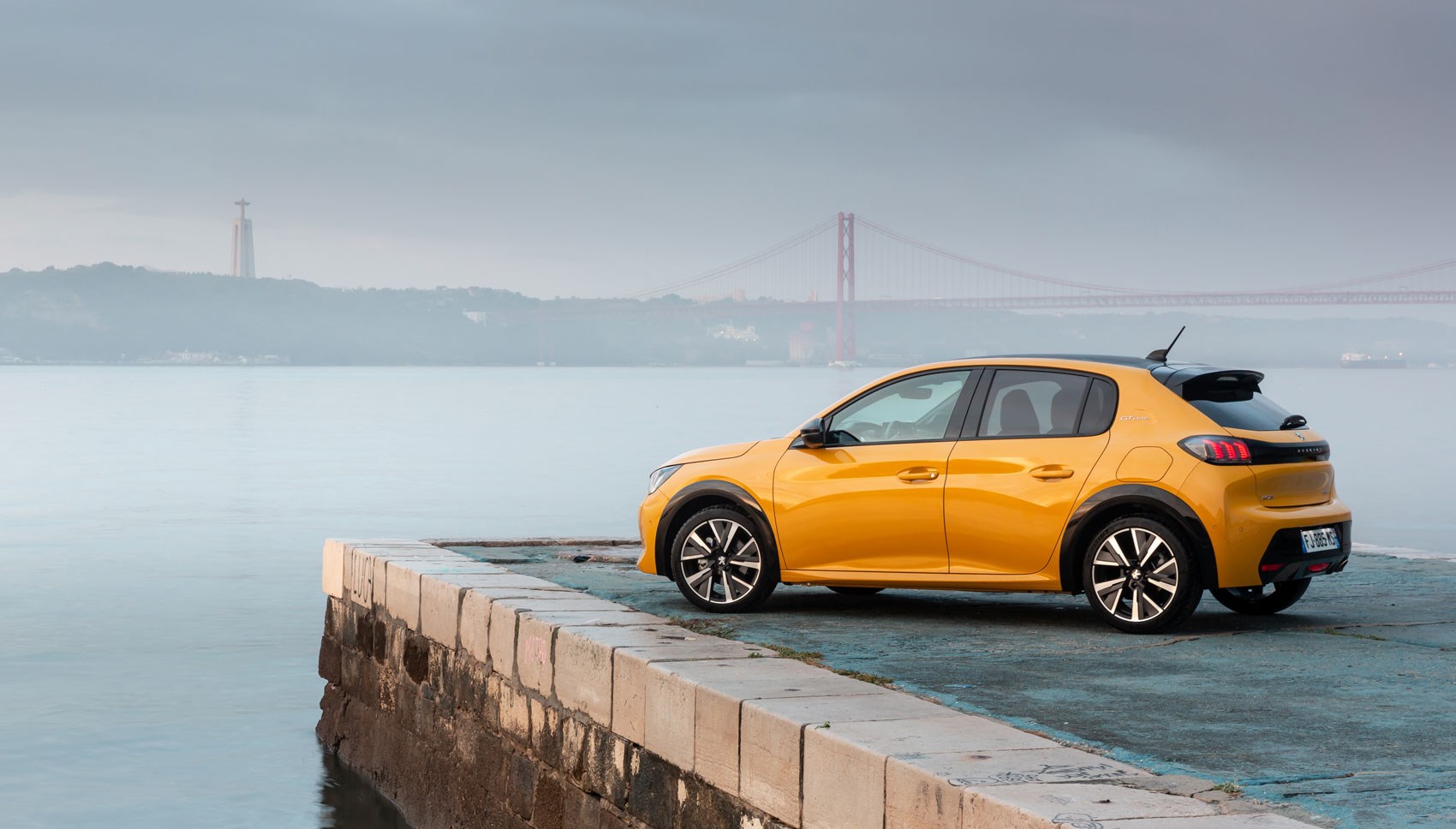
The auto ‘box (standard on 129hp models, optional on the 99hp) has eight speeds and reacts promptly to prods of the throttle. We’d need to drive it over here to say for certain but early indications suggest is feels more responsive than VW’s DSG, although the column-mounted shifters are an odd shape to grab and a bit rough around the edges.
Peugeot claims the new 208 is on average 30kg lighter than its predecessor: this version weighs 1090kg, the equivalent Fiesta 1.0 EcoBoost is 1144kg. The Peugeot returns 53mpg (on the new WLTP test cycle), and emits 96-102g/km depending on wheel size and spec.
There’s also a 1.5-litre four-cylinder diesel 208, which delivers 88.2mpg (NEDC combined cycle test) and 85g/km of CO2; it musters 99bhp and is coupled with a six-speed manual gearbox only. This is the least exciting version, although admirably refined, it suffers from quite a bit of turbolag.
Lastly, there’s a pure electric version of the 208, with 217 miles of range on the official test cycle. We’ve pitted the 208 petrol against the e-208 and the diesel for a VIDEO – click to watch it and read the insightful comparison story.
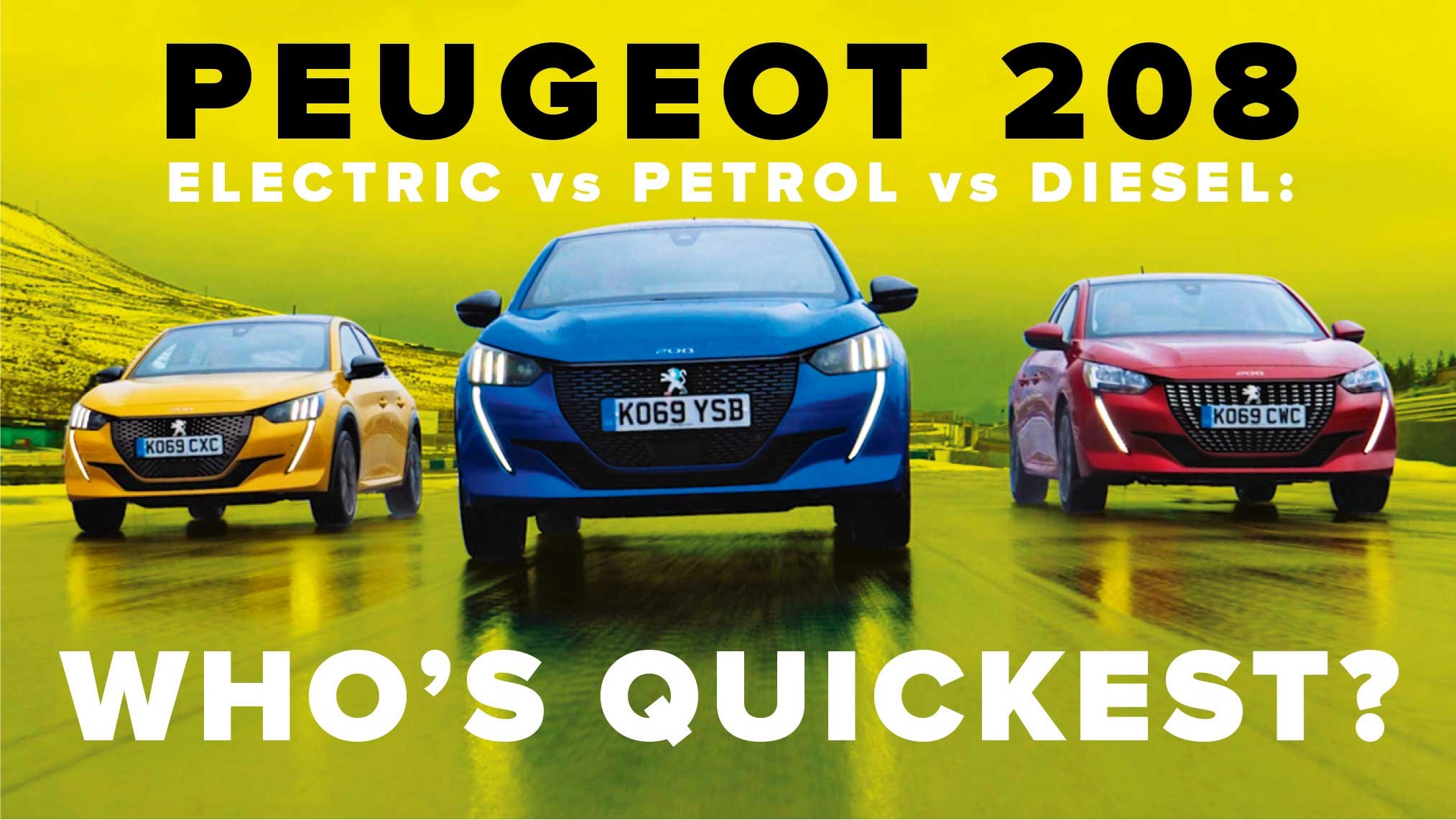
And hasn’t Peugeot thrown the tech kitchen sink at the 208?
Indeed, and probably an Internet of Things-connected sink at that. Most notable is a pure electric version with a range of up to 211 miles, which should cost from around £28,000 (excluding government subsidy). But ‘thermic’ 208s, as Peugeot calls combustion-engined variants, are dripping with gadgetry too.
All 208s get those beautiful fangs of LED running lights, even a base car which is expected to cost from £16,000. The second-highest trim, GT Line (the yellow car pictured here), gets high-beam headlamp assist, a 7-inch touchscreen and wireless smartphone charging plate, plus front/rear parking sensors and a reversing camera.

Controlling the main screen are a set of piano-inspired buttons like Kia has been doing for years, although with a bit more chrome and shiny black plastic. They look great, but the row of touch sensitive keys behind are easily tapped by mistake, and collect condensation from the air con.
Safety kit includes a driver attention warning, lane keeping assist, traffic sign recognition, cruise control and active safety braking which works in the dark.
One high-end feature is Peugeot’s adaptive cruise control with stop-and-go function and lane positioning assist, which endows the 208 with Level 2 autonomy that enables it to brake and accelerate responding to the car in front and stay in lane. Expect this to be an option. Automated park assist (linked to the automatic ‘box) and active blind spot monitoring are also available.
Autonomy levels explained
Peugeot 208: verdict
The new 208 offers something sufficiently distinctive to make Brits question their devotion to the stuck-in-a-rut Ford Fiesta, and sufficiently samey to pose a dilemma for Vauxhall Corsa loyalists – 208 and Corsa are duplicates under the skin, bar ride and handling and specification tweaks.
It’s nice to look at, fun to drive and packed with exciting tech. From that perspective the battle is more or less won – the supermini brief is (in theory) quite a simple one to nail.
A Fiesta is still a better drive and the Polo that Peugeot benchmarks this car against is a more refined, comfortable companion, but the 208 is easily the more exciting and eye-catching model.
UK drives of this French hatchback may reveal an iffy ride quality that could make the 208 a hard thing to live with. Let’s hope not, because for all other intents and purposes it’s shaping up to be a fantastic car, and the choice for supermini buyers is fresher than it’s been in years.
Check out our Peugeot reviews